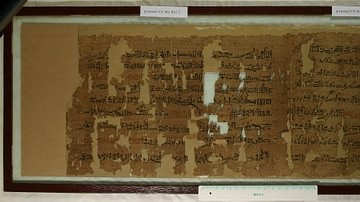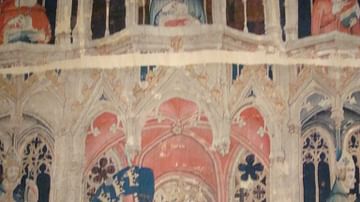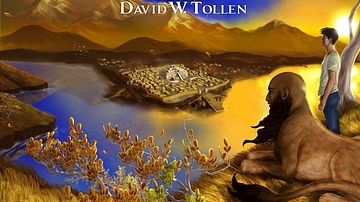Search Articles
Browse Content (p. 122)

Article
A Brief History of Egyptian Art
Art is an essential aspect of any civilization. Once the basic human needs have been taken care of such as food, shelter, some form of community law, and a religious belief, cultures begin producing artwork, and often all of these developments...

Article
The Satire of the Trades
The literature of ancient Egypt is as rich and varied as any other culture. From the inscriptions of the Old Kingdom of Egypt (c. 2613-2181 BCE) through the Love Poems of the New Kingdom (c. 1570 - c. 1069 BCE) the Egyptian scribes produced...

Article
Jobs in Ancient Egypt
In ancient Egypt, the people sustained the government and the government reciprocated. Egypt had no cash economy until the coming of the Persians in 525 BCE. The people worked the land, the government collected the bounty and then distributed...

Article
The Literary Development of the Arthurian Legend
The Arthurian legend begins with the Welsh cleric Geoffrey of Monmouth (c. 1100 - c. 1155 CE). Earlier history writers such as Gildas, Bede, and Nennius had already established the existence of a British war-chief who defeated the Saxons...

Article
Music & Dance in Ancient Egypt
Music and dance were highly valued in ancient Egyptian culture, but they were more important than is generally thought: they were integral to creation and communion with the gods and, further, were the human response to the gift of life and...

Article
The Historical King Arthur
The legends surrounding King Arthur and his knights have charmed and intrigued people for centuries and their popularity continues in the present day. As with any famous figure, however, the question arises as to whether the legend is based...

Article
Early Human Migration
Disregarding the extremely inhospitable spots even the most stubborn of us have enough common sense to avoid, humans have managed to cover an extraordinary amount of territory on this earth. Go back 200,000 years, however, and Homo sapiens...

Article
Ships of the Gods of Ancient Egypt
The Nile River was the source of life for the ancient Egyptians and so figured prominently in their religious beliefs. At night, the Milky Way was considered a heavenly Nile, associated with Hathor, and provider of all good things. The Nile...

Interview
The Jericho River: An Interview with David Tollen
In his first work of fiction, the novel The Jericho River ($12.88 on Amazon/ $9.94 on Bookdepository) David Tollen tells a vivid story by beautifully bringing together most major civilizations in history. In this exclusive interview, Jan...

Article
Setna II: A Detailed Summary & Commentary
Setna II (also Setna Khaemaus and Si-Osire) is a work of ancient Egyptian literature from Roman Egypt (30 BCE - 646 CE) written in demotic script. It is part of a cycle of stories known as the Tales of Prince Setna featuring a character based...